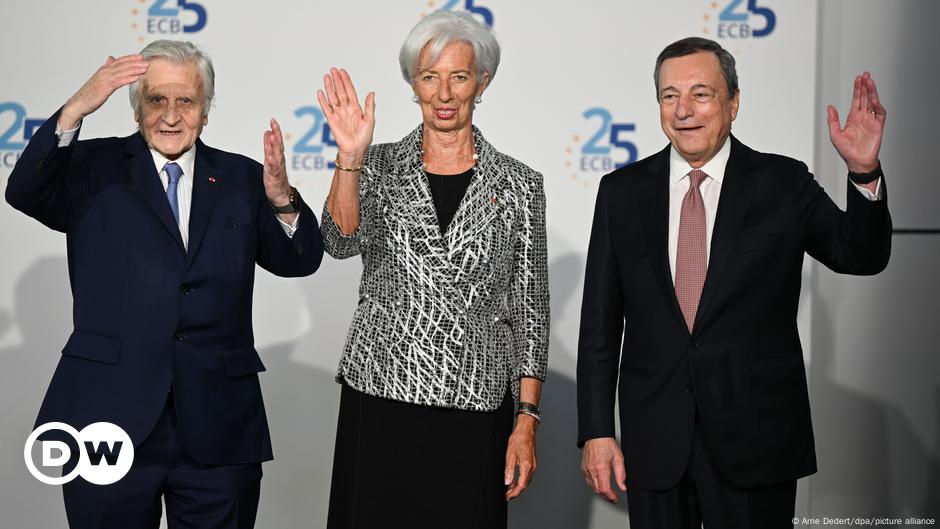There are sentences that are historical. In the 25 years of history of European Central Bank (ECB) certainly heard a statement made as a threat to speculators by Mario Draghi in addition. It is what he calls Bazooka or Fat Bertha that he puts in position in 2012 by making it clear: The ECB will do everything necessary to save the euro – the famous “whatever it takes” speech to international investors in London .
Europe at this time is at the peak of euro crisis. Greece is in danger of going bankrupt after admitting, starting in 2009, that its public finances are in a far worse position than previously thought. If Greece were to go bankrupt and be excluded from the euro zone, the euro in its original form would be history. To prevent this, the famous statement is made: “Within our mandate, the ECB is ready to do whatever it takes to preserve the euro”. The postscript is usually not quoted, but it is crucial: “And believe me, it will be enough.” (“Believe me, that will do.”)
Speculators caught off guard
The sentence is unconditional and striking. Because betting against a determined central bank is pointless. As a result, the central bank demonstrates this power. While it had been buying up government bonds from the euro area on a smaller scale on the secondary market since 2010, it massively expanded its purchases during the crisis. As a result, yields on the bond markets are falling, and government financing in countries such as Greece, Spain, Portugal and Italy is stabilising. Speculators in the financial markets had bet that some of these states would default because the debt burden was crushing and yields on borrowing had skyrocketed.
The European Central Bank is thus at the center of everything that is happening in the crisis, also because there were no other financial authorities with sufficient resources to act in this situation. Not to mention the many-voiced orchestra of disagreement between the interests of the individual eurozone member states. “That was a major turning point,” says economist Friedrich Heinemann from the European Center for Economic Research (ZEW) in Mannheim. “But you have to be fair: In the summer of 2012, Mario Draghi saved the eurozone from total collapse.” to get the necessary loans at affordable interest rates. For its part, the central bank should actually only work towards the stability of the euro, i.e. price stability of the currency. With the purchase of government bonds from the euro area, however, the ECB has entered a field that is suspiciously close to – at least indirect – state financing. That’s why she was often criticized for it, because it didn’t correspond to her mandate. For example, the CSU politician Peter Gauweiler and AfD founder Bernd Lucke had sued against the Bundesbank’s participation in the bond purchases from 2015. However, the court dismissed the lawsuits as unfounded.
The first seat of the ECB in Frankfurt was the Eurotower
More and more tasks, more and more staff
However, as a result of the euro crisis, the European Central Bank has even more tasks. If it has to step into the breach, it should also oversee the control of large banks in the euro area. Because the Banking crisis from 2007 after the bankruptcy of the US investment bank Lehman Brothers had led to the sovereign debt crisis. In addition, banks were also at risk during the euro crisis because they had most of the euro government bonds on their balance sheets. Since then, the ECB has carried out regular so-called stress tests as part of its supervision of large banks in the euro area. In this way, she wants to have risks in the balance sheets recognized and eliminated at an early stage.
In addition, the ECB acted in the euro crisis in Europe as a powerful player within the so-called troika of the International Monetary Fund (IMF), the EU Commission and the ECB. As a lender of last resort, it provided liquidity support for affected states via its balance sheet.
With the expanded tasks, the balance sheet total of the ECB also increased (see infographic). In the years between 2010 and 2016, it rose from 163 billion euros to 349 billion – and amounted to almost 699 billion euros last year. As a result, the number of employees at the ECB has doubled from just under 1,700 in 2010 to around 3,500 today.
A new building is needed. In 2014, the central bank moved out of Frankfurt city center to the east of the city on the banks of the Main, to the site of the former wholesale market hall of the Main metropolis. The central bank opts for complete foreclosure. While the old building in the city center was more or less freely accessible, the intricate new glass tower resembles a fortress.
Journalists who attend the press conferences after the interest rate decisions are screened at the entrance just like at the airport. The ECB has grown a lot bigger and more powerful in the 25 years since it was founded. Over the past 15 years it has grown into a stronghold in successive crises.
The article was first published on 05/23/2023 and updated on 05/31/2023.

